Hot Chips 2020 Live Blog: Microsoft Xbox Series X System Architecture (6:00pm PT)
by Dr. Ian Cutress on August 17, 2020 9:00 PM EST- Posted in
- CPUs
- Microsoft
- GPUs
- Xbox
- Live Blog
- Xbox Series X
- Hot Chips 32
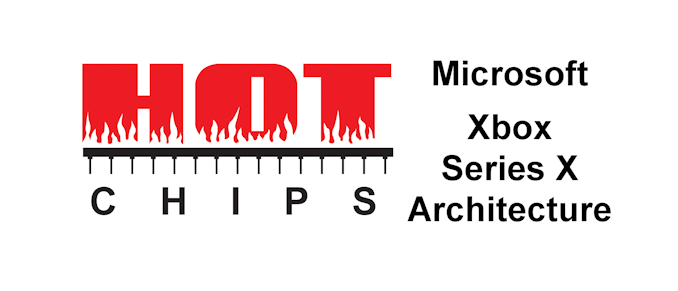
09:04PM EDT - Final talk of the day is Xbox Series X System Architecture!
09:05PM EDT - Azure Silicon Architecture Team
09:06PM EDT - 3.8 GHz Zen2 Server cores
09:06PM EDT - DXR, VRS, Machine LEarning Acceleration
09:07PM EDT - 14 Gbps GDDR6, 320-bit = 560 GB/s
09:07PM EDT - Hardware accelerators in blue
09:07PM EDT - 120 Hz support, VRR, Xbox Velocity Architecture for MSP Crypto/Decomp on NVMe SSD
09:07PM EDT - Acoustic acceleration
09:07PM EDT - HSP/Pluton RoT - security
09:08PM EDT - 360.4mm2 TSMC N7 enhanced
09:08PM EDT - 15.3B transistors
09:08PM EDT - 2 four core CPU clusters
09:08PM EDT - 10 GDDR6 controllers
09:09PM EDT - GPU 12 FLOPs
09:10PM EDT - AVX256 gives 972 GFLOP over CPU
09:10PM EDT - 16 GB of GDDR6 total
09:11PM EDT - >Says Zen2 server class, but L3 cache is mobile class?
09:11PM EDT - Display processing is kept off the shader engines
09:11PM EDT - IO hub supports PCIe 4.0 x8
09:11PM EDT - Operates on linear light values, not gamma light values
09:12PM EDT - ALLM - Auto Low Latency Mode
09:13PM EDT - Increased die cost on this APU over previous generation
09:13PM EDT - Significantly more expensive!
09:13PM EDT - Trade off
09:13PM EDT - MS created Audio engines - 3 engines, CFPU2, MOVAD, LOGAN
09:13PM EDT - CFPU2 for audio convolution, FFT, reverb
09:14PM EDT - such as Project Acoustics to model 3D audio sources
09:14PM EDT - MOVAD - hyper real-time hardware audio decoder
09:14PM EDT - >300x channels decode at once
09:14PM EDT - best trade off codec, so made in hardware
09:15PM EDT - >100dB signal noise ratio
09:15PM EDT - HW realtime real-time matched to decode based on sampling
09:15PM EDT - Logan is offering also better offload in traditional modes
09:15PM EDT - HSP/Pluton: Root of trust, crypto, SHACK (crypto keys)
09:15PM EDT - MSP supports 5 GB/s high-bw crypto on the SSD
09:16PM EDT - DRAM to SSD balance needed for refill
09:16PM EDT - Load times are always increasing unless SW-to-DRAM bw increases, hence NVMe SSDs
09:17PM EDT - Sampler Feedback System
09:17PM EDT - New metadata for texture portions to pre-load texture caches
09:17PM EDT - Direct Storage
09:17PM EDT - Manages data locations ahead of developer
09:18PM EDT - Distinct savings for most detail texture maps savings
09:18PM EDT - Lossless MS XVA 2:1 compression
09:19PM EDT - Need big GPU - get the tech out of the way
09:19PM EDT - Need raw ops/second increase within PPA and cost
09:19PM EDT - 12.2 supported in HW
09:19PM EDT - 26 active dual CUs (52 CUs)
09:20PM EDT - single geometry supports primatives
09:20PM EDT - DIrectly snoop CPU caches
09:20PM EDT - Dual stream multi-core command processor
09:20PM EDT - Double rate 16-bit math
09:20PM EDT - single cycle issue rate to reduce stalls
09:21PM EDT - CUs have 25% better perf/clock compared to last gen
09:21PM EDT - GPU Evolution: FLOPS have outpaced mem space and BW
09:21PM EDT - Screen pixels has increased in th emiddle
09:22PM EDT - How to fill pixels better without blowing power budget
09:22PM EDT - VRS
09:22PM EDT - supports up to 2x2
09:22PM EDT - 10-30% perf gain for tiny area cost
09:23PM EDT - Full edge detail
09:23PM EDT - SFS
09:24PM EDT - Previously very slow to enable
09:24PM EDT - Two new HW structures for tile-by-tile management for in-DRAM textures
09:25PM EDT - clamps LOD
09:26PM EDT - Tilemaps should stay on die for best latency
09:27PM EDT - SFS: 60% IO/Mem savings for small die area cost
09:27PM EDT - DX Ray Tracing Accel
09:27PM EDT - Not a complete replacement - RT can be applied selectively based on traditional models
09:28PM EDT - Custom ray-triangle units
09:28PM EDT - ML inference
09:29PM EDT - Two virtualized command streams - two VMs
09:29PM EDT - Main title OS vs system OS
09:29PM EDT - 32b HDR rendering, blending display
09:29PM EDT - Optimized games. Unable to show at the event
09:30PM EDT - Q&A Time
09:31PM EDT - Q: TDP? A: Not commenting. There's so many things that are involved in the TDP, and tradeoffs. We're not really able to descibe it without describing it in a technical environemtn
09:32PM EDT - Q: Can you stream into the GPU cache? A: Lots of programmable cache modes. Streaming modes, bypass modes, coherence modes.
09:33PM EDT - Q: Coherency CPU and GPU? A: GPU can snoop CPU, reverse requires software
09:35PM EDT - Q: Are you happy as DX12 as a low hardware API? A: DX12 is very versatile - we have some Xbox specific enhancements that power developers can use. But we try to have consistency between Xbox and PC. Divergence isn't that good. But we work with developers when designing these chips so that their needs are met. Not heard many complains so far (as a silicon person!). We have a SMASH driver model. The games on the binaries implement the hardware layed out data that the GPU eats directly - it's not a HAL layer abstraction. MS also re-writes the driver and smashes it together, we replace that and the firmware in the GPU. It's significantly more efficient than the PC.
09:35PM EDT - Q: Is link between CPU and GPU clocks? A: Hardware is independent.
09:36PM EDT - Q: Is the CPU 3.8 GHz clock a continual or turbo? A: Continual.
09:36PM EDT - Continual to minimize variance
09:37PM EDT - Q: TSMC 7nm enhanced, is it N7P, N7+, or something else? A: It's not base 7nm, it's progressed over time. Lots of work between AMD and TSMC to hit our targets and what we needed
09:38PM EDT - Q: Says Zen 2 is server class, but you use L3 mobile class? A: Yeah our caches are different, but I won't say any more, that's more AMD.
09:39PM EDT - Q: With 20 channels GDDR6, is that really cheaper than 2 stacks HBM? A: We're not religious about which DRAM tech to use. We needed the GPU to have a ton of bandwidth. Lots of channels allows for low latency requests to be serviced. HBM did have an MLC model thought about, but people voted with their feet and JEDEC decided not to go with it.
09:40PM EDT - Q: GDDR6 on sides, not bottom? A: bottom is power, how board interfaces with the chip. GPU has high EDC and currents, and you need clean copper to deliver that. With that much current you need to leave that space unless you use super expensive packaging. We did it the cost efficient way
09:41PM EDT - Q: Why do you need so much math for audio processing? A: 3D positional audio and spatial audio and real world spaces if you 300-400 audio sounds positional in 3D and want to start doing other effects on all samples, it gets very heavy compute. Imagine 20 people fighting in a cave and reflections with all sorts of noises
09:43PM EDT - That's a wrap and we're done for today. Come back tomorrow at 8:30am PT to talk about FPGAs. It's 2:44am here in the UK, time to go to bed.


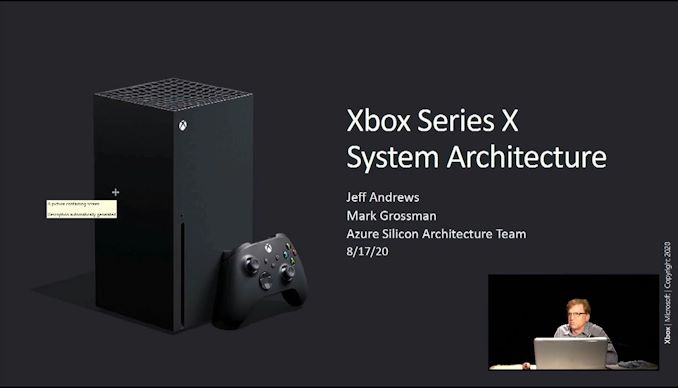
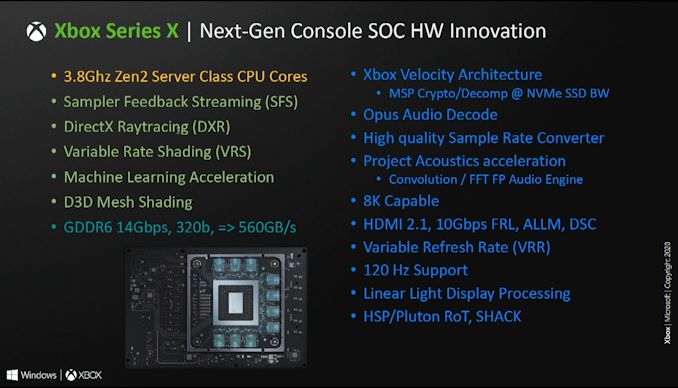
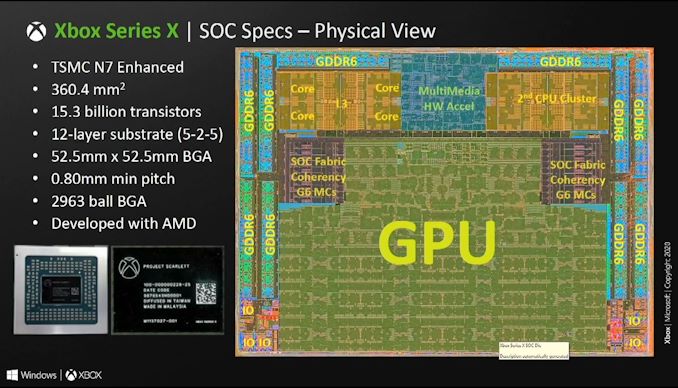

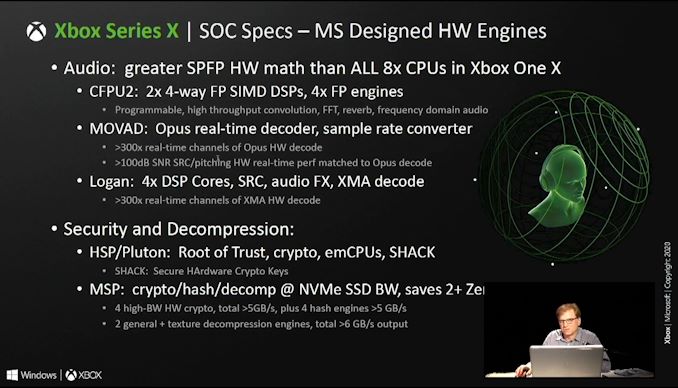
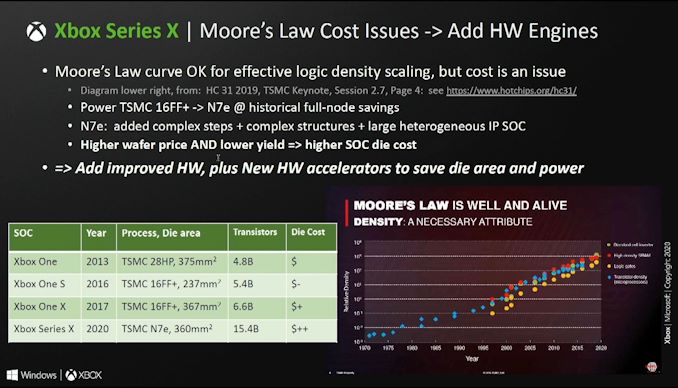
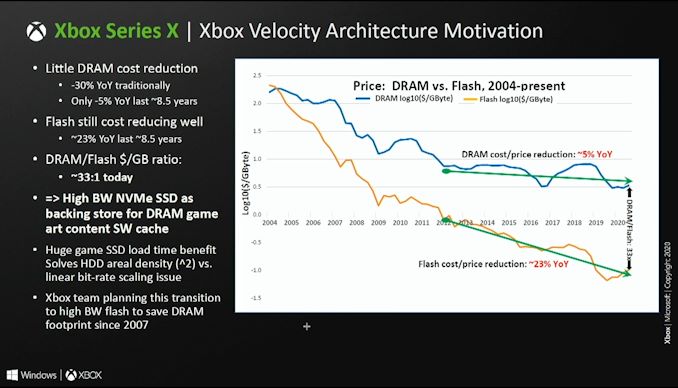
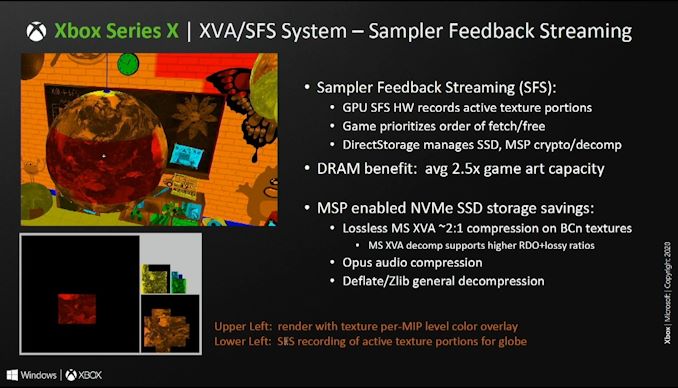
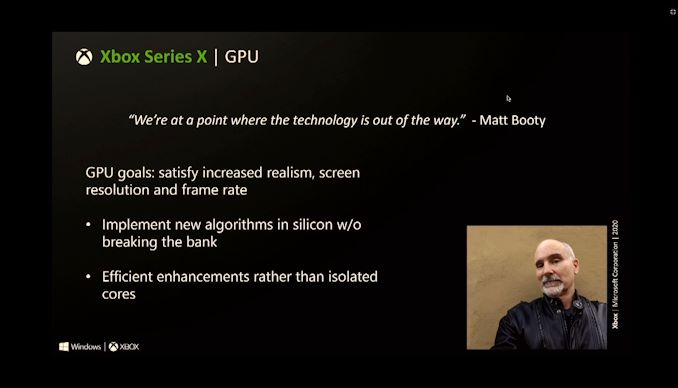
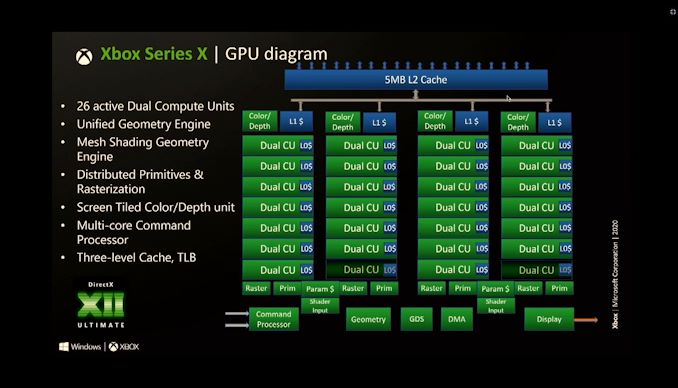
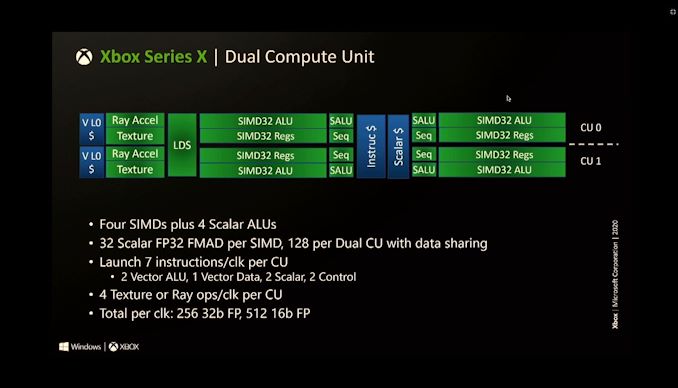
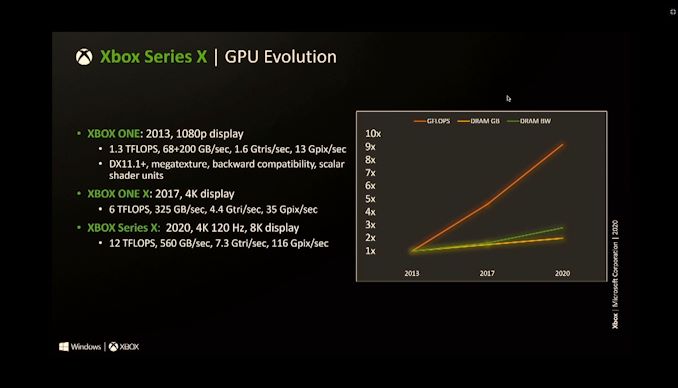

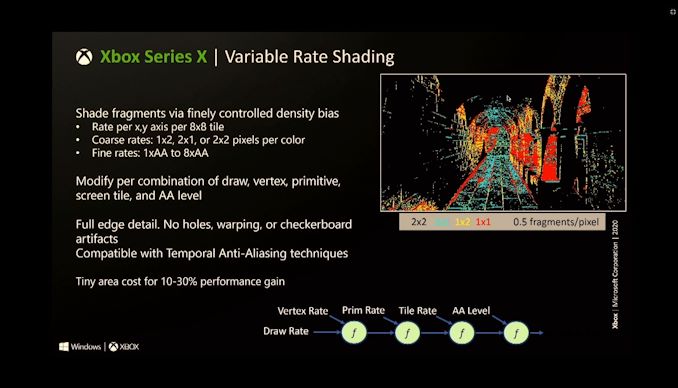
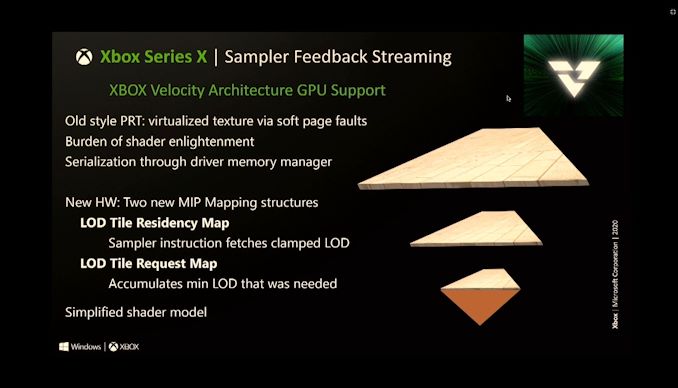
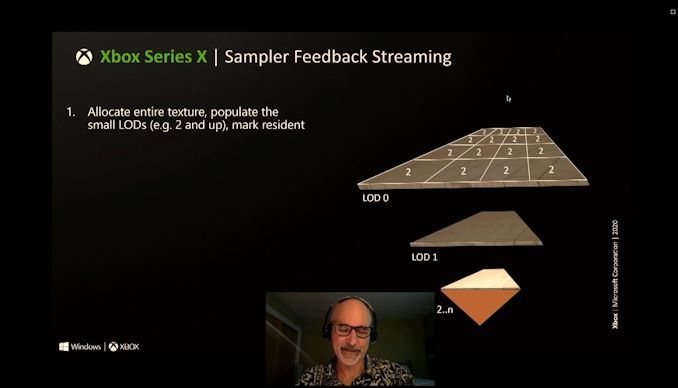
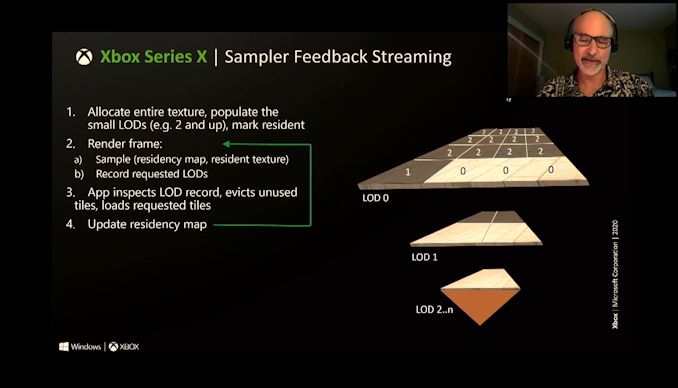
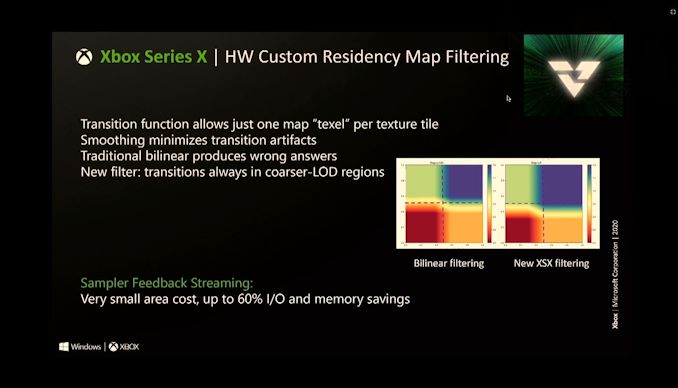
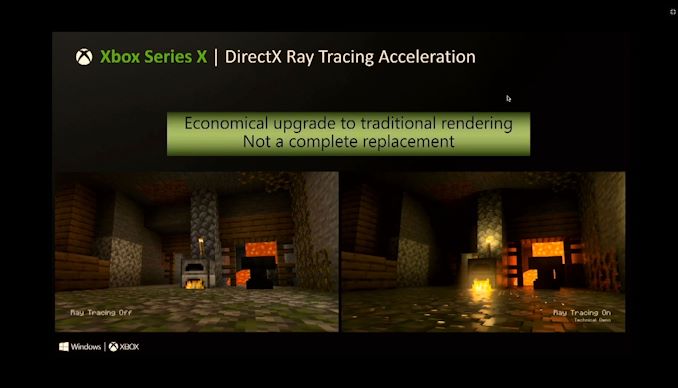
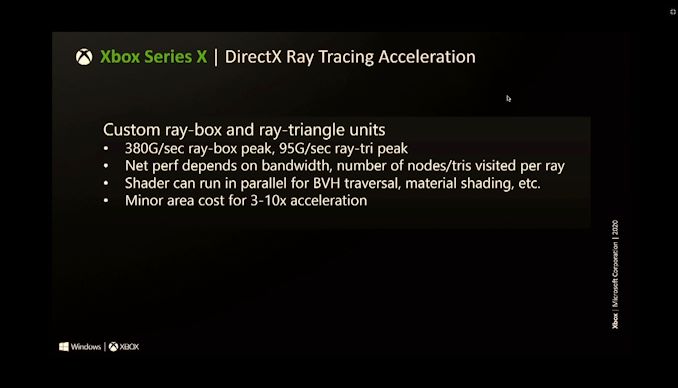










58 Comments
View All Comments
d0x360 - Wednesday, August 19, 2020 - link
Crazy liquid metal? Liquid metal is just an alternative to thermal paste. It's more efficient... But it also has to be replaced or should be replaced yearly because it dries out.If sony really is using liquid metal as their TIM then it's a massive mistake that will lead to throttling at best and dead systems at worst.
darealist - Tuesday, August 18, 2020 - link
RDNA2 will only be able to do economic Ray Tracing L O Lfrbeckenbauer - Tuesday, August 18, 2020 - link
so are current and next Gen Nvidia GPUs. Look at the gigantic framerate hit you get when trying to do full RT, it's not worth it. You have to apply it smartlyd0x360 - Wednesday, August 19, 2020 - link
I dunno... Control uses ray tracing for quite a bit and it shows in both visual quality and the huge performance hit... Buuut chances are these consoles have more rt hardware than 1st gen RTX and when you combine that with VRS and Microsoft's own version of DLSS2... It should perform just fine at 4k even with ray tracing.On a 2080ti I have to render Control at 1080p to get a locked (output) 4k60 at the games max settings with DLSS2 in quality mode. It can get close at a rendering resolution of 1440p but not close enough, plus the frame rate is all over the place.
That being said DLSS2 is such an amazing improvement over v1 that in Control is essentially looks native and in Death Stranding it looks better than native but the render resolution is also higher.
Point is... It can be done with no sacrifice to fidelity.
hecksagon - Thursday, August 20, 2020 - link
What they mean is that the scene is still a raster render with some ray tracing to create shadows or real time reflections on certain objects. No hardware right now can render an modern AAA game fully ray traced, and they won't be able to for a long time. I doubt it will even be pursued because the compute resources required are better used for other things.Spunjji - Wednesday, August 19, 2020 - link
That's the same as literally ever other GPU out there. Full real-time ray-tracing at current resolutions and expected detail levels is still impossible with hardware available today.Whether it's better than Turing and Ampere is unknown, but you seem to have made up your mind...
Alexvrb - Sunday, August 23, 2020 - link
You should probably read up on the subject. RDNA2 architecture doesn't really have much to do with RT. *Just like Nvidia*, it's a separate hardware block, a RT accelerator. Both Nvidia and AMD are using hybrid rendering. You blend traditional rasterization and RT, balancing the workload as suited to your game/engine. Having a hybrid chip also means your 2080 Ti or Series X can run existing titles better than predecessors, since they have gobs of rasterization-capable hardware.DanNeely - Tuesday, August 18, 2020 - link
How does 16GB of GDDR6 over 10 controllers work?Zizy - Tuesday, August 18, 2020 - link
6x2GB+4x1GB. This is also why devs are getting 10GB of full speed + ~3 GB of reduced speed (the rest of reduced speed is for OS).But I have no idea why MS wouldn't use 10x2GB for 20GB, all at full speed. It would drive home "our console is the most powerful" even better.
oleyska - Tuesday, August 18, 2020 - link
it's in the slides why...